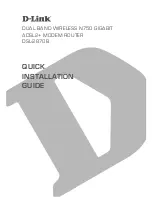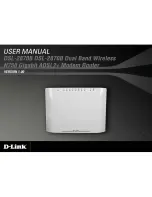
40
www.elpro.com.au
245U-E Wireless Ethernet Modem User Manual
Rev Version 2.24
Trusted CA certificate
upload
Upload the certificate of the issuer of the RADIUS server’s certificate. This
enables the Supplicant to verify the identity of the RADIUS server during the
authentication process. Supported EAP method is PEAP / MSCHAPv2.
Certificate Verification
result
Once a certificate has been loaded, this field will contain validation
information for the certificate. If this field is blank or contains errors, the
certificate is invalid.
Trusted CA Certificate
Contents
Displays the contents of the CA certificate.
3.8 Normal Operation
After addresses are configured the units are ready for operation. Refer to “1.0 Network Topology” for an
explanation on the operation of a bridge and router.
Bridge Operation (Transparent Network)
A bridge connects several Ethernet networks together, and makes them appear as a single Ethernet
network to higher protocol layers. By default, the 245U-E is configured as a transparent bridge. When a
transparent bridge is started, it learns the location of other devices by monitoring the source address of
all incoming traffic. Initially, it forwards all traffic between the wired Ethernet port and the wireless port.
However, by keeping a list of devices heard on each port the transparent bridge can decide which traffic
must be forwarded between ports, and will only transfer a message from the wired port to the wireless
port if it is required.
A bridge will forward all broadcast traffic between the wired and wireless ports. If the wired network is busy
with broadcast traffic, the radio network on the 245U-E can be unnecessarily overburdened. Use filtering to
reduce broadcast traffic sent over the radio. Refer to “3.19 Filtering” for information on how to configure a
filter.
By default, a transparent bridge does not handle loops within the network. There must be a single path to
each device on the network. Loops in the network will cause the same data to be continually passed around
that loop. Redundant wireless links may be set up by enabling the bridge Spanning Tree Protocol (see “3.5
Spanning Tree Algorithm” for details).
Router Operation (Routed Network)
A router joins separate IP sub-networks together. The router has different IP addresses on its wired and
wireless ports, reflecting the different IP addresses of the separate Ethernet networks. All of the devices
in these separate networks identify the router by IP address as their gateway to the other network. When
devices on one network wish to communicate with devices on the other network, they direct their packets
at the router for forwarding.
Because the router has an IP address on each of the networks it joins, it inherently knows the packet
identity. If the traffic directed at the router cannot be identified for any of the networks to which it
is connected, the router must consult its routing rules as to where to direct the traffic. For details on
configuring routing rules, see “3.18 Routing.”
















































